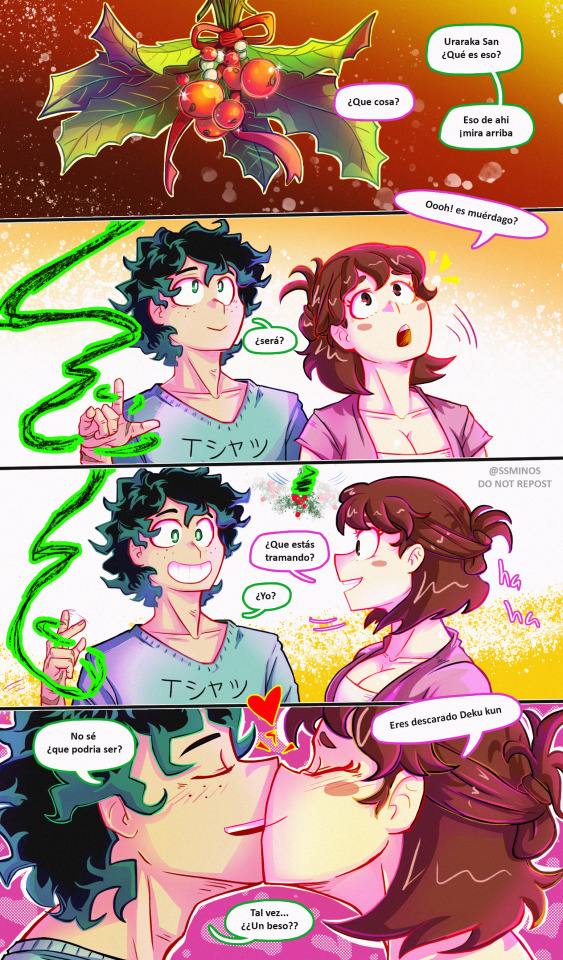#mochidon month
Explore tagged Tumblr posts
Text

#izuku midoriya#bnha#uraraka ochako#my hero academia#izuocha#dekuravity#mochidon month#gossip#art challenge#izuocha week#izuocha never give up week
280 notes
·
View notes
Text
The Middle Glaciocene: 110 million years post-establishment

A Blossoming Wonder: Pebblefruit Forests of West Mesoterra
Pebblefruit are fruit-bearing trees descended from stonefruit, but with one significant difference: over millions of years, due to pressure from gnawing rodents that destroy seeds easily, they evolved to grow smaller, harder seeds that grow in clusters in each fruit, that are more likely to be swallowed whole and later passed in droppings undamaged.
Stonefruit descendants, including pebblefruit, grow worldwide and are currently one of the most common and abundant large trees that prosper in the Middle Glaciocene. And nowhere else are they more diverse and abundant than in the western region of Mesoterra: where, thanks to the mild temperate weather and richer soils, they form large swathes of forest comprised of an intermingling of several species of pebblefruit trees.
Remarkably, the different species of pebblefruit tree have synchronized their blooming seasons to be asynchronous to each other: as to avoid competition over pollinators and seed dispersers. The result is a forest that is constantly in bloom all year round, with a different species blooming and yet another one fruiting every couple of months-- and which means that flowers and fruit are available at any given season, making this region a frugivore and nectarivore's haven.

Indeed, a spectacular array of fruit-eaters converge here to capitalize on this abundant resource: most spectacular of these being the pink mochidon (Otopteroingo rosotinctus): a walkaby descended from East Nodera's hamstriches that, pressured away from grazing by the arrival of the podotheres during the fusion of Mesoterra, became a browser that also eats leaves but greatly favors the nutritious sugary flowers and fruit, so much that it sequesters pigments from this diet and uses it for display, in a manner akin to other walkabies like its distant relatives, the algae-eating flamoingos of the brassican marshes. Bright patterns on its large ears are used for display and communication between individuals, being a sociable species that travels in small family groups in search for blooming trees.
Not all fruit-eaters in these blossoming biome, however, are quite as large. Many are small, arboreal creatures that make their homes in treetops and patrol a territory encompassing several tree species to enjoy a constant supply of food. Lemunkies such as the bandit ninchuck (Jitsupithecomys melanoleuca) travel the canopy in noisy groups as they feast on the constant abundance. Indeed, each group has a favorite tree, which they zealously defend from other groups of lemunkies seeking to raid their turf. Ratbats are abundant here too, with fruit-eating forms such as the red-striped berribat (Fructonyctus erythrocephalus) and the nectarivorous spectacled blossamer (Nectarinyctus alboculus), all of which play an important role in the forest's ecology as seed-spreaders and pollinators that keep the life cycles of the trees going strong.
Other, more typical herbivores live in these forests too, feeding on low-growth vegetation that springs up in abundance on the forest floor. The dwarf buffant (Elephasinus minimus), smallest of the eight extant buffant species on Mesoterra at just a quarter ton, lives off a diet of mosses, lichens, cloverferns and fungi, while small, herbivorous and omnivorous podotheres, like the slender pododeer (Cervipodotherium cervium), browse on bushes and shrubs that form the understory of the forest, as well as the berries of those low-growing bushes when they are available.
But while this idyllic, rosy-tinted landscape may seem like a utopia for herbivores of all kinds, it is not without its dangers, for several predators roam this forests, in turn capitalizing on the abundance of plant-eaters drawn by the banquet of fruit. The top predator of the pebblefruit forests is the western ohami (Lycanopodotherium amaterasi), a species of loupgaroo which preys upon small herbivores like the pododeer and, while too small to take on adult buffants and mochidons, pose a significant threat toward their young. And up in the trees, targeting the lemunkies and ratbats that flourish in the canopy, is a relative of the treegers and tigerillas: the crimson bossum (Diavodidelphis reginus). Clad in reddish fur mottled with dark spots, it blends in among the red and pink blossoms when it lies in wait to ambush prey, especially during Beta-twilight when the crimson bossum is most active and on the move.
▪▪▪▪▪▪▪▪▪▪
41 notes
·
View notes
Text


#izuku midoriya#uraraka ochako#uravity#deku#dekuocha#izuocha never give up week#mochidon month#drawing challenge#art challenge#bnha#genderbend#ochadeku#izuocha#izuku as cinnamonroll#uraraka x deku#comic
139 notes
·
View notes
Text

#bnha#boku no hero#my hero academia#uraraka ochako#uravity#pro hero#floating#izuocha never give up week#izuocha#Ochako MVC (most value character)#pink aesthetic#mochidon month
115 notes
·
View notes
Text

#izuku midoriya#boku no hero#bnha#uraraka ochako#izuocha#drawing challenge#mochidon month#izuocha never give up week#l'm going to posy this on twitter later#heroes
138 notes
·
View notes
Text

#izuku midoriya#boku no hero#bnha#uraraka ochako#izuocha never give up week#drawing challenge#izuocha#merry christmas#kiss under the mistletoe#izuku sassy#christmas#mochidon month
87 notes
·
View notes
Text

here in english version!!!
#izuku midoriya#boku no hero#uraraka ochako#theme: social network#drawing challenge#mochidon month#izuocha week#izuocha never give up week#uraraka x deku#dekuravity#bride#marriage
52 notes
·
View notes
